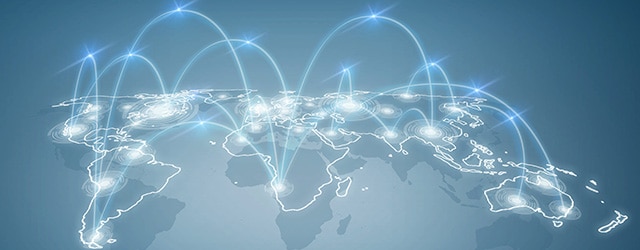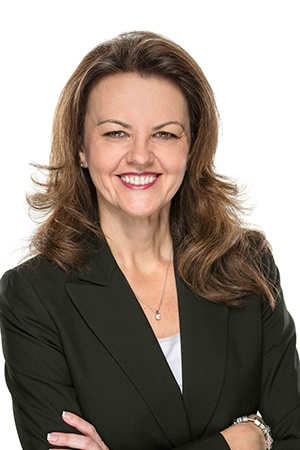As a pathway to harmonization and platform interoperability for financial institutions, ISO 20022 is catching on. But migration to the global payments standard could be easier.

By any assessment, ISO 20022 has been enthusiastically embraced by global financial institutions since the first edition was published in 2004. The messaging standard for electronic data interchange between institutions, ISO 20022 is already used in more than 70 countries.
But it may soon become nearly universal. According to a recent SWIFT study, if current deadlines are met, in the next five years it will support 79% of high-value payments volume and 87% of the value of transactions worldwide. “We now see the ISO 20022 community taking a more proactive approach to handling change, meeting new requirements and supporting interoperability,” James Whittle, convenor of the ISO 20022 Registration Management Group, told clients in a newsletter.
Forthcoming implementations in the eurozone, the US and the UK will join systems already live in Switzerland, Japan, China and India. “In the US, some banks still have to send checks, because they do business only in North America,” says Hans Tesselaar, executive director of the Banking Industry Architecture Network (BIAN). “If they want to expand and open up, then they will need to come to ISO.”
Also fueling the acceleration is SWIFT’s consultation study on the migration of cross-border services to ISO 20022. The study’s results are expected to be unveiled at the Sibos 2018 conference in Sydney, Australia, in October.
Migration to the new standard is not a uniform process, however; and for all its success, general acceptance of ISO 20022 has been hobbled by the adoption of different internal practices, message formats and migration timetables in different markets. Since the standard is focused on bank-to-bank and bank-to-corporate interactions, more could be done to take a broader spectrum than payments into account. For non-finance-sector developers who have no need for all of the information required for processing financial messages, ISO 20022 is cumbersome and unwieldy.
SWIFT aims to produce an ISO 20022 harmonization framework that solves these problems and brings the remaining markets into the fold more quickly and easily. That prospect has once again made the advantages and the challenges of migration to the new standard a hot issue.
The Data Dictionary
Serena Smith, division executive for international payments at FIS, describes ISO 20022 as a “data dictionary” composed of standard reusable data types and attribute definitions. “It is pretty rich, and as such it applies in a variety of business scenarios and message types,” she says. “ISO 20022 can support a full catalogue of messages across payments and accounts management, securities, trade services, cards and FX. So in the broader scope of banking, ISO 20022 is like the mother of all standards.”
Payment messages that can include richer remittance and invoicing information—which would otherwise require separate, sometimes manual, data exchange—mean greater automation, better integration, and optimization of cash and treasury management.

Smith, FIS: Stakeholders should not reinvent the wheel. Seek consistency when transitioning. |
ISO 20022 allows various parties to share data across the payment chain—including the instructing party, intermediary and debtor/creditor agents—using multiple identifiers. That means processing engines and fraud systems can leverage the rich content of messages for more in-depth evaluation, with obvious benefits for security. “With a single standard like ISO 20022,” says Smith, “anti-money-laundering and other regulatory rules can be expressed more clearly and don’t need transformation into multiple messaging options.” This simplifies and improves adherence to regulations.
ISO 20022 migration has advantages for financial institutions themselves. Gartner’s oft-cited report Ten Key Actions to Reduce IT Infrastructure and Operations Costs estimates that 60% of IT budgets is spent on integration—in other words, on the plumbing of the payment and transactions system rather than the activities which generate revenues and profits. “Standardization will at least lower that spend because it increases interoperability,” says Tesselaar. “It gives you a common language that everybody understands, whether you are a bank, fintech, service provider or software provider. If they all align to ISO 20022, it makes the whole integration much easier.”
Standardized communication is the key to the platform interoperability that is expected to transform banking, Smith says. That includes interaction between myriad applications within the banking system, but also facilitating cooperation in future fintech ecosystems: “Think open banking,” Smith says. ISO 20022 will be a key facilitator, as real-time payment schemes blur the lines between card and noncard payments, Smith predicts. “All new domestic real-time payment systems—from Australia, across Europe and the UK, to the US—embrace ISO 20022,” she notes.
Getting to Interoperability
Thus far, however, migration has not been easy or cheap, in part because ISO 20022 itself is not as inclusive as it perhaps should be. “It’s very strict, with optimum security; but it needs to be more open, with application-programming interfaces,” says Tesselaar. BIAN uses ISO 20022 as its base model and has its API definitions aligned accordingly, to encourage adoption by banks and fintechs.
In June, the Bank of England began consulting on the contents and transition methods of ISO 20022, which will be used by CHAPS, Faster Payments and BACS. Payments Canada is building a new core clearing-and-settlement system called Lynx and adopting ISO 20022 as the foundation of its payments-modernization program. Last year, Payments Canada ran a proof-of-concept for an ISO 20022 file-validation service to support industry advancements. “What propels us forward is the collective ambition to deliver a fast, flexible and secure payments system that promotes innovation and strengthens Canada’s competitive position,” says Gerry Gaetz, president and CEO of Payments Canada, in its 2017 annual report.
While cost remains a major barrier to ISO 20022 migration—in some cases requiring a complete rethink of a bank’s IT strategy—in the end, Tesselaar insists, the savings more than make up for it.
To make the transition as efficient as possible, Smith suggests stakeholders leverage the ISO e-repository to get a head start. “Furthermore, a lot of transformation mapping has been defined for respective legacy formats,” she says. “Stakeholders should not reinvent the wheel. Seek consistency when transitioning.” The next step after adapting the processing engines is rigorous testing and certification in a sandbox environment. “Nobody likes change per se,” Smith says. “So the best approach is to define a clear end-date for legacy formats and standards.”
Transition costs depend greatly on how broad a migration your institution plans. If only messaging will be affected, costs will be low, but the benefits will be limited as well. “The opportunity of transitioning to ISO 20022 lies in the value of enriched data,” Smith says. “Cost can be traded off against return/benefits. Then it is no longer a cost issue, but more an investment for new opportunities.”
Greater harmonization is best achieved by sticking to the standard as much as possible. Given the newness of these systems, this means the standard has to be adaptable. Already the EU registration authority has requested a change to the template, for messages that do not fit the current standard. “ISO 20022 is not the holy grail, as the registration authority realized.” New and future technologies may adopt their own formatting, but it’s expected that ISO 20022 will evolve with the newer technologies. “The main hurdle for ISO 20022 is verbosity,” says Smith. This could be “a hurdle for machine-to-machine communication, which is evolving in particular in the context of chatbots and future initiatives around the ‘internet of things.’”
A standard produced by financial institutions for financial institutions will be a challenge for developers working for nonfinancial institutions. How efforts to future-proof the ISO 20022 standard meet this challenge remains to be seen.



